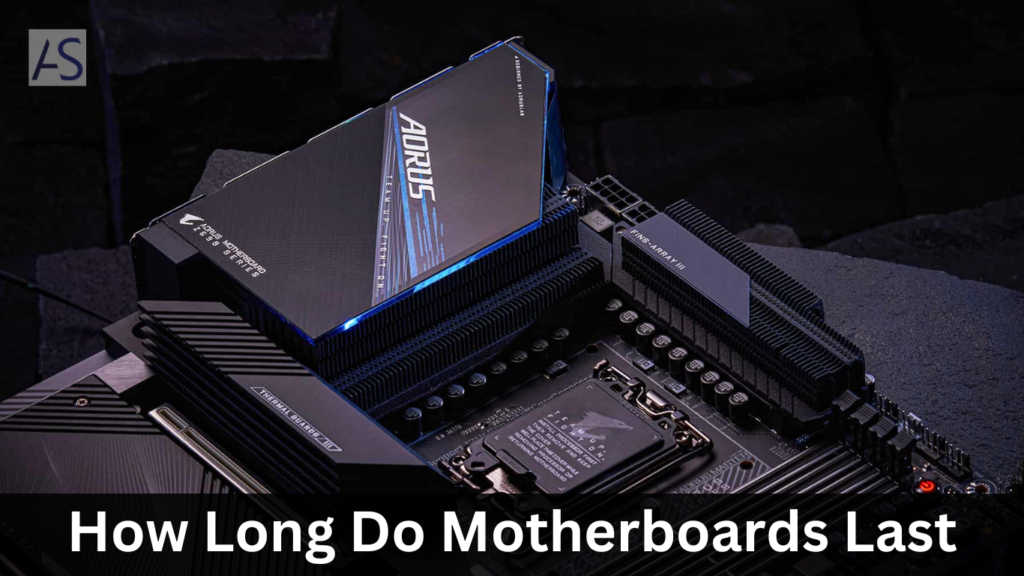Motherboards, the backbone of any computer system, dictate the functionality and compatibility of other components within a PC. Their longevity is a topic of much interest and discussion among tech enthusiasts, professionals, and average users alike.
Typically, the lifespan of a motherboard hinges on various factors, ranging from the quality of manufacturing, updates in technology, to the conditions under which they operate.
Understanding how long a motherboard can last is essential for anyone planning to build a new computer, upgrade an existing system, or troubleshoot potential issues that may arise over time.
Factors Affecting Motherboard Lifespan
Several factors can influence how long a motherboard will last, including:
Quality of Components
The quality of the materials and components used in the motherboard’s construction plays a significant role in its durability.
Higher-quality capacitors, MOSFETS, and other parts can withstand more stress and heat, leading to a longer lifespan.
Environmental Factors
Exposure to extreme temperatures, humidity, and dust can take a toll on a motherboard over time.
Ensuring proper ventilation and maintaining a clean, cool environment for your computer can help extend its life.
Usage Patterns
How frequently and intensively a motherboard is used also significantly impacts its lifespan.
Motherboards in systems that are constantly running, particularly those under heavy loads such as gaming, video editing, or server operations, may experience more wear and stress than those used more sparingly.
Furthermore, regular startups and shutdowns can also contribute to the thermal stress on the motherboard’s components, potentially reducing its overall lifespan.
Adopting habits like shutting down the system when not in use and avoiding unnecessary stress can help in prolonging the life of a motherboard.
Average Lifespan of Motherboards
In general, a well-maintained motherboard can last anywhere from 5 to 10 years, although some may last longer or shorter depending on the factors mentioned above.
It’s worth noting that technology advancements can also play a role in determining when to upgrade your motherboard, as newer models may offer improved performance and features.
Consumer-grade motherboards typically have a shorter lifespan compared to enterprise-grade motherboards, which are designed for more demanding and continuous use.
Signs of Motherboard Failure
Knowing the common symptoms of a failing motherboard can help you address issues before they lead to a complete system breakdown.
Some signs to watch out for include:
- System instability, freezing, or random crashes
- Failure to boot or recognize hardware components
- Burning smells or unusual noises
- Visible damage, such as swollen capacitors or burn marks
If you suspect your motherboard is failing, diagnostic tools and professional assistance can help pinpoint the problem.
Extending Motherboard Lifespan
To extend the lifespan of a motherboard, several key strategies can be implemented. First and foremost, ensuring adequate cooling is vital, heat is one of the primary factors that shorten the lifespan of electronic components.
Utilizing good quality fans, heat sinks, and, if necessary, water cooling systems can help maintain optimal operating temperatures. Additionally, keeping the computer’s interior clean by regularly removing dust and debris can prevent overheating and reduce wear on the motherboard’s components.
Using a surge protector or an uninterruptible power supply (UPS) can also protect the motherboard from power surges and fluctuations, which can cause significant damage.
Furthermore, proper handling and maintenance, such as avoiding physical damage during upgrades or component installation and updating the BIOS only when necessary, can also contribute to a motherboard’s longevity.
Lastly, choosing a motherboard from a reputable manufacturer known for quality and durability can make a significant difference in how long the motherboard will last.
Conclusion
The lifespan of a motherboard depends on various factors, from the quality of its components to the care it receives.
By understanding these factors and taking proactive steps to maintain your motherboard, you can enjoy a reliable and long-lasting computing experience.
As technology continues to advance, we can expect to see even more durable and efficient motherboards in the future, further extending the life of our digital companions.


